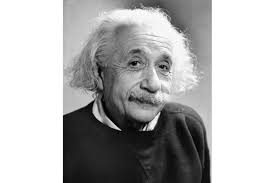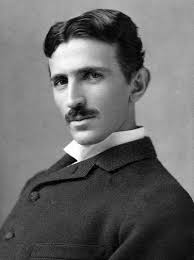Introduction
Quirky habits of famous historical figures is full of larger-than-life figures who have shaped our world with their actions and ideas. While we often learn about their significant achievements and contributions, it’s the little quirks and peculiar habits that make them more relatable and human. These eccentricities give us a glimpse into their personal lives, making them more than just names in history books. Let’s delve into the fascinating and often amusing quirks of some famous historical figures.
Albert Einstein’s Love for the Violin

The Musical Genius
Albert Einstein is renowned for his groundbreaking contributions to physics, but few people know about his deep love for music. Einstein began playing the violin at the age of six and continued to play throughout his life. He often turned to his violin to unwind and think through complex problems.
A Source of Inspiration
Einstein once said, “Life without playing music is inconceivable for me.” He even credited his musical intuitions for helping him in his scientific work. Playing the violin wasn’t just a hobby; it was an integral part of his creative process.
Winston Churchill’s Strange Eating Habits
A Peculiar Breakfast
Winston Churchill, the British Prime Minister during World War II, had some unusual eating habits. He was known to start his day with a breakfast that included not only the typical eggs and toast but also whiskey and a cigar. This morning routine was as unique as the man himself.
Culinary Quirks
Churchill had a penchant for strange food combinations. For instance, he enjoyed eating cold roast beef with a hefty helping of mustard. His culinary quirks extended to his love for champagne, which he reportedly drank daily, even during times of rationing.
Nikola Tesla’s Obsessive Hygiene

The Eccentric Inventor
Nikola Tesla, the brilliant inventor and electrical engineer, had numerous eccentric habits, particularly related to hygiene. Tesla was obsessed with cleanliness and had an extreme fear of germs. He reportedly used 18 napkins to clean his dining area before every meal.
Numerical Obsessions
Tesla had a strange fixation with numbers, particularly the number three. He often walked around a block three times before entering a building and insisted on staying in hotel rooms divisible by three. These quirks were part of his complex personality and relentless quest for perfection.
Leonardo da Vinci’s Sleep Schedule
The Polymath’s Routine
Leonardo da Vinci, the epitome of a Renaissance man, had a peculiar sleep pattern known as polyphasic sleep. Instead of a single stretch of sleep at night, da Vinci took multiple short naps throughout the day. This allowed him more waking hours to work on his numerous projects.
The Benefits
Da Vinci’s unconventional sleep schedule is said to have given him extra time for his vast array of interests, from painting and sculpture to engineering and anatomy. While polyphasic sleep is not for everyone, it seemed to suit da Vinci’s relentless curiosity and productivity.
Charles Dickens’ Compulsive Walking
The Writer’s Wandering
Charles Dickens, the famous English novelist, had a habit of taking long walks through the streets of London. He often walked up to 20 miles a day, using these excursions to gather inspiration for his writing and observe the lives of everyday people.
Midnight Rambles
Dickens’ walks were not limited to daytime; he was known to embark on nocturnal wanderings as well. These midnight rambles helped him clear his mind and develop his intricate plots and memorable characters.
Ludwig van Beethoven’s Coffee Fixation
The Composer’s Ritual
Ludwig van Beethoven, the legendary composer, had a very specific coffee-making ritual. He insisted on using exactly 60 coffee beans for each cup, counting them out meticulously. This ritual was part of his daily routine and reflected his meticulous nature.
A Daily Necessity
Beethoven’s love for coffee was well-known, and he reportedly drank several cups a day. His coffee fixation is just one example of his many eccentric habits that contributed to his creative genius.
Benjamin Franklin’s Air Baths
The Founding Father’s Routine
Benjamin Franklin, one of America’s Founding Fathers, had a peculiar habit he called “air baths.” He believed that exposure to fresh air was essential for good health. Each morning, he would sit naked by an open window for about an hour, regardless of the weather.
Health Benefits
Franklin’s air baths were part of his broader interest in personal hygiene and health. He believed that this practice helped him stay healthy and invigorated. While unconventional, it was in line with his experimental and inquisitive nature.
Frida Kahlo’s Pet Menagerie
The Artist’s Companions
Frida Kahlo, the iconic Mexican artist, had a deep love for animals and kept a variety of exotic pets. Her home, known as the Blue House, was filled with animals, including monkeys, parrots, and hairless dogs.
Artistic Inspiration
Kahlo’s pets were not just companions; they also served as inspiration for her art. Many of her self-portraits feature her beloved animals, reflecting her close bond with them and her vibrant, eclectic personality.
Isaac Newton’s Obsession with Alchemy
The Scientist’s Secret Pursuit
Isaac Newton, one of the greatest scientists in history, had a lesser-known obsession with alchemy. He spent a considerable amount of time studying and practicing alchemy, searching for the Philosopher’s Stone and the elixir of life.
The Intersection of Science and Mysticism
Newton’s interest in alchemy might seem odd by modern standards, but it was not uncommon in his time. His alchemical pursuits reflect the blurred lines between science and mysticism during the 17th century and add a fascinating dimension to his intellectual legacy.
Salvador Dalí’s Peculiar Diet
The Surrealist’s Culinary Choices
Salvador Dalí, the renowned surrealist artist, had some strange dietary habits. He was known to eat unusual foods, such as sea urchins, which he believed stimulated his creativity. Dalí’s culinary choices were as eccentric as his art.
The Influence on His Art
Dalí’s unique diet was part of his larger-than-life persona and his dedication to living a surrealist lifestyle. His food choices and eating rituals often found their way into his art, blurring the lines between his life and his creative work.
Agatha Christie’s Bathtub Snacks
The Mystery Writer’s Habit
Agatha Christie, the queen of mystery novels, had a peculiar habit of eating apples in the bathtub. She found that relaxing in the bath with a snack helped her brainstorm and develop her intricate plots.
Creative Sanctuary
Christie’s bathtub habit underscores the importance of creating a personal sanctuary for creativity. Her ability to write some of the world’s most famous mystery novels was fueled by these moments of quiet reflection.
Also Read The Art of Communication in Love: Speaking the Language of the Heart
Nikola Tesla’s Pigeon Companions
The Inventor’s Feathered Friends
Nikola Tesla, already known for his eccentricities, had a deep affection for pigeons. He spent hours each day feeding and caring for them in New York City’s parks. Tesla even had a special bond with a particular white pigeon, which he claimed brought him comfort and inspiration.
A Solitary Life
Tesla’s relationship with his pigeons reflects his solitary and introspective nature. Despite his groundbreaking work and numerous inventions, he lived a largely isolated life, finding companionship in his feathered friends.
Henry VIII’s Caloric Curiosity
The King’s Diet
Henry VIII, the infamous Tudor king, had a diet that was as excessive as his lifestyle. He consumed enormous quantities of food, including up to five meals a day, with each meal featuring a variety of meats, breads, and sweets.
The Consequences
Henry’s indulgent eating habits contributed to his significant weight gain and numerous health issues later in life. His diet reflects the opulence and excesses of his reign, offering a glimpse into the daily life of a notorious historical figure.
Jane Austen’s Writing Routine
The Novelist’s Secrecy
Jane Austen, the beloved English novelist, had a discreet writing routine. She often wrote in the family sitting room and would hide her manuscripts whenever someone entered. This habit allowed her to maintain privacy while working on her now-famous novels.
The Challenges of a Female Writer
Austen’s need for secrecy highlights the challenges faced by female writers in her time. Despite the obstacles, she persisted in her craft, producing timeless works that continue to captivate readers today.
Marie Curie’s Radioactive Handkerchiefs
The Pioneer’s Unusual Habit
Marie Curie, the pioneering physicist and chemist, had an unusual habit related to her groundbreaking work with radioactive materials. She reportedly carried test tubes of radium in her pockets and stored them in her desk drawer, sometimes even using her handkerchiefs to handle the substances.
The Risks and Rewards
Curie’s casual approach to handling radioactive materials reflects the lack of understanding of the dangers at the time. Despite the risks, her discoveries laid the foundation for modern nuclear science and earned her two Nobel Prizes.
Conclusion
The quirky habits of famous historical figures reveal the human side of these larger-than-life personalities. Their eccentricities add depth and color to their stories, making them more relatable and intriguing. From Einstein’s violin to Marie Curie’s radioactive handkerchiefs, these habits remind us that even the greatest minds have their peculiarities. Embracing these quirks can offer valuable insights into their lives and inspire us to appreciate our own unique habits.
FAQs
1. Did Albert Einstein really play the violin?
Yes, Albert Einstein was an accomplished violinist and found playing music helped him relax and think through complex problems.
2. What was Winston Churchill’s morning routine?
Winston Churchill’s morning routine included a hearty breakfast, whiskey, and a cigar, reflecting his unique and indulgent lifestyle.
3. Why did Leonardo da Vinci practice polyphasic sleep?
Leonardo da Vinci practiced polyphasic sleep to maximize his waking hours for work and exploration. This unconventional sleep pattern allowed him to take multiple short naps throughout the day instead of a single long sleep.
4. What were Nikola Tesla’s unusual habits?
Nikola Tesla had several unusual habits, including obsessive hygiene, a fixation with the number three, and a deep affection for pigeons. These quirks were part of his complex personality and relentless quest for perfection.
5. What was Benjamin Franklin’s air bath?
Benjamin Franklin practiced “air baths” by sitting naked by an open window for about an hour each morning. He believed that exposure to fresh air was essential for good health and vigor.


